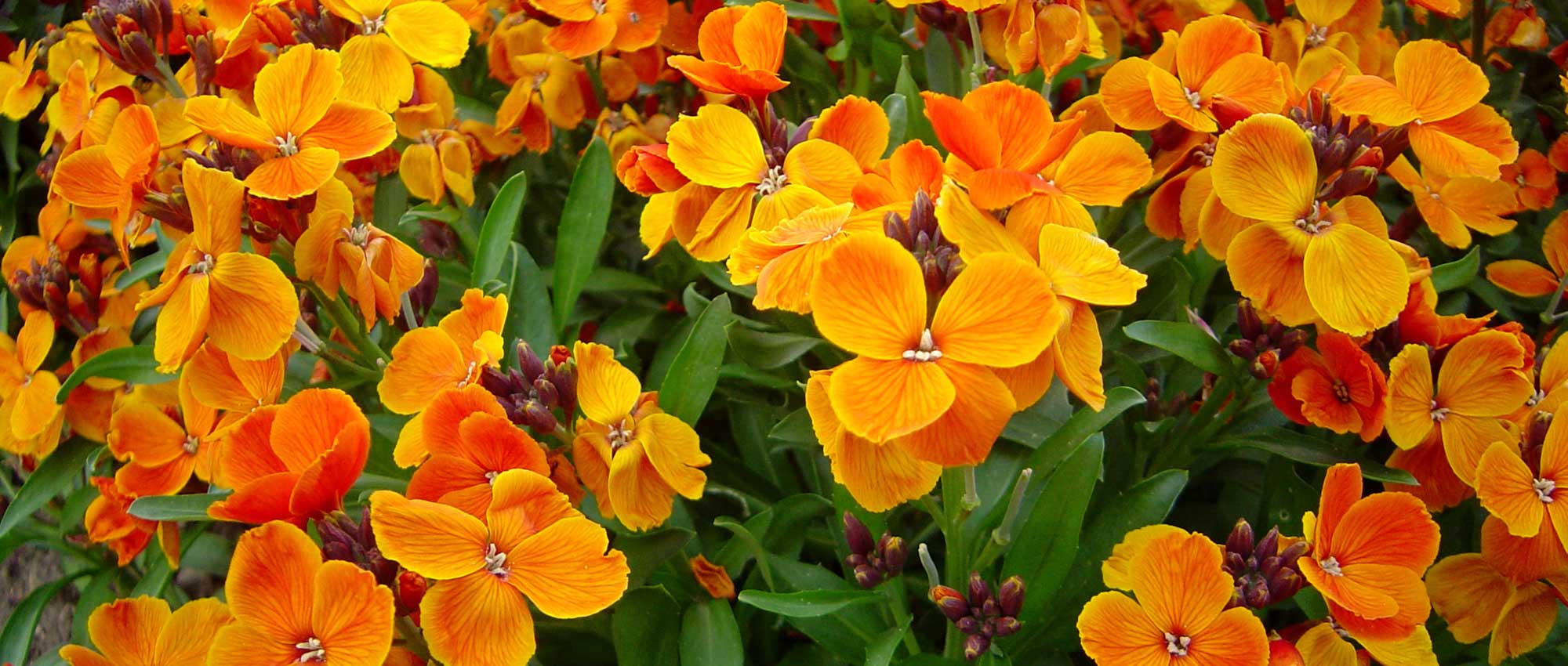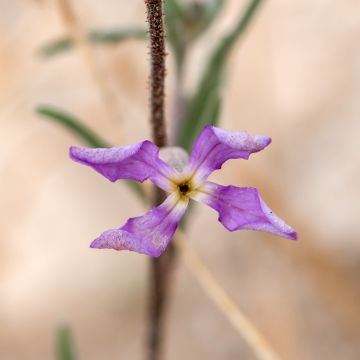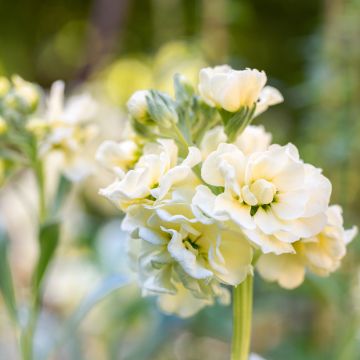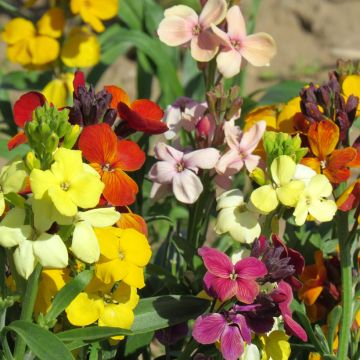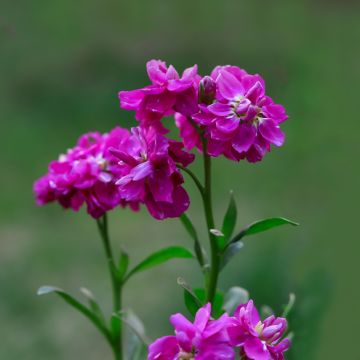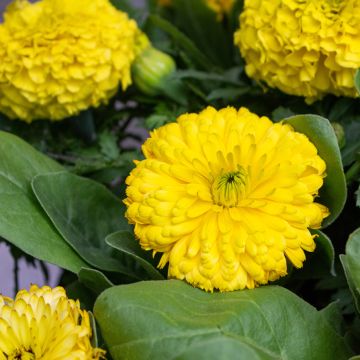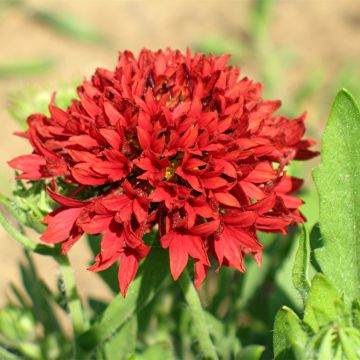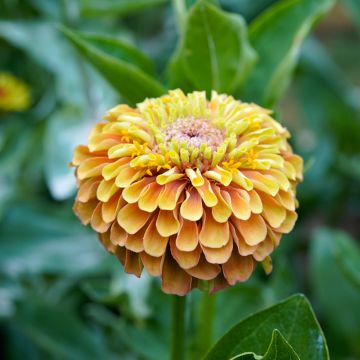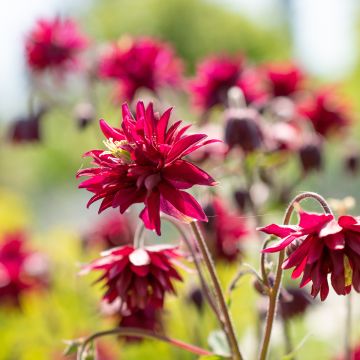

Matthiola incana Hot Cakes mixed - seeds
Matthiola incana Hot Cakes mixed - seeds
Matthiola incana Hot Cakes mixed - Stocks
Stock, Hoary Stock
Special offer!
Receive a €20 voucher for any order over €90 (excluding delivery costs, credit notes, and plastic-free options)!
1- Add your favorite plants to your cart.
2- Once you have reached €90, confirm your order (you can even choose the delivery date!).
3- As soon as your order is shipped, you will receive an email containing your voucher code, valid for 3 months (90 days).
Your voucher is unique and can only be used once, for any order with a minimum value of €20, excluding delivery costs.
Can be combined with other current offers, non-divisible and non-refundable.
Home or relay delivery (depending on size and destination)
Schedule delivery date,
and select date in basket
This plant carries a 6 months recovery warranty
More information
We guarantee the quality of our plants for a full growing cycle, and will replace at our expense any plant that fails to recover under normal climatic and planting conditions.
Would this plant suit my garden?
Set up your Plantfit profile →
Description
The 'Hot Cakes mixed' stocks in this blend are robust, floriferous, and well-branched annual plants. They produce a profusion of bright and fragrant flowers from late spring to the heart of summer. The mostly double flowers come in a beautiful range of colours, from white to violet, with various shades of pink to purple depending on the plants. They easily self-seed in borders or containers and are perfect for charming bouquets.
The stock, Matthiola incana in Latin, is a short-lived perennial herbaceous plant or a fast-growing biennial, often grown as an annual. It belongs to the Brassicaceae family (like cabbages or mustard) and originates from the Mediterranean basin, specifically the Canary Islands, where it grows on rocks near the coast. The 'Hot Cakes' mixed selection produces upright, dense and compact plants, reaching approximately 40 cm (16in) high and 30 cm (12in) wide within a few months. They have narrow lanceolate, slightly greyish green leaves and fragrant flowers arranged in spikes from May to August. The majority of plants produce double flowers in various colours, including white, pink, mauve, and violet, as well as rare shades like burgundy or purple. These flowers are attractive to bees and butterflies and followed by seeds that will self-sow in the garden.
These mixed stocks are ideal for borders, flower beds, or pots placed near pathways or entrances to fully enjoy their sweet fragrance. In flower beds, they can be paired with summer annuals such as lavateras, malopes, nigellas, godetias, or opium poppies. They also make delightful romantic bouquets, alongside peonies and lilacs.
Flowering
Foliage
Plant habit
Botanical data
Matthiola
incana
Hot Cakes mixed - Stocks
Brassicaceae
Stock, Hoary Stock
Cultivar or hybrid
Other Wallflower seeds
View all →Planting and care
Sow the seeds from February to April on the surface of moist compost, in pots or trays, and lightly cover the with a thin layer of vermiculite. Place in a propagator or enclose a transparent plastic bag, kept in at a temperature between 20-25 °C (68-77°F). Keep the seedlings near a light source as this promotes germination. Keep the compost surface moist but not waterlogged and germination will usually take 10 to 21 days.
When the young plants are sufficiently developed, transplant them into 7.5 cm (3in) pots or trays. Gradually acclimatise the plants to cooler conditions for a few days before planting them out, after all risk of frost, 30 cm (12in) apart. Choose a sunny location and well-draining soil, or pots filled with a rich and well-draining mix.
In dry soil and a sunny exposure, remember to water your plants regularly in summer so that the soil never completely dries out.
Sowing period
Intended location
Planting & care advice
This item has not been reviewed yet - be the first to leave a review about it.
Similar products
Haven't found what you were looking for?
Hardiness is the lowest winter temperature a plant can endure without suffering serious damage or even dying. However, hardiness is affected by location (a sheltered area, such as a patio), protection (winter cover) and soil type (hardiness is improved by well-drained soil).

Photo Sharing Terms & Conditions
In order to encourage gardeners to interact and share their experiences, Promesse de fleurs offers various media enabling content to be uploaded onto its Site - in particular via the ‘Photo sharing’ module.
The User agrees to refrain from:
- Posting any content that is illegal, prejudicial, insulting, racist, inciteful to hatred, revisionist, contrary to public decency, that infringes on privacy or on the privacy rights of third parties, in particular the publicity rights of persons and goods, intellectual property rights, or the right to privacy.
- Submitting content on behalf of a third party;
- Impersonate the identity of a third party and/or publish any personal information about a third party;
In general, the User undertakes to refrain from any unethical behaviour.
All Content (in particular text, comments, files, images, photos, videos, creative works, etc.), which may be subject to property or intellectual property rights, image or other private rights, shall remain the property of the User, subject to the limited rights granted by the terms of the licence granted by Promesse de fleurs as stated below. Users are at liberty to publish or not to publish such Content on the Site, notably via the ‘Photo Sharing’ facility, and accept that this Content shall be made public and freely accessible, notably on the Internet.
Users further acknowledge, undertake to have ,and guarantee that they hold all necessary rights and permissions to publish such material on the Site, in particular with regard to the legislation in force pertaining to any privacy, property, intellectual property, image, or contractual rights, or rights of any other nature. By publishing such Content on the Site, Users acknowledge accepting full liability as publishers of the Content within the meaning of the law, and grant Promesse de fleurs, free of charge, an inclusive, worldwide licence for the said Content for the entire duration of its publication, including all reproduction, representation, up/downloading, displaying, performing, transmission, and storage rights.
Users also grant permission for their name to be linked to the Content and accept that this link may not always be made available.
By engaging in posting material, Users consent to their Content becoming automatically accessible on the Internet, in particular on other sites and/or blogs and/or web pages of the Promesse de fleurs site, including in particular social pages and the Promesse de fleurs catalogue.
Users may secure the removal of entrusted content free of charge by issuing a simple request via our contact form.
The flowering period indicated on our website applies to countries and regions located in USDA zone 8 (France, the United Kingdom, Ireland, the Netherlands, etc.)
It will vary according to where you live:
- In zones 9 to 10 (Italy, Spain, Greece, etc.), flowering will occur about 2 to 4 weeks earlier.
- In zones 6 to 7 (Germany, Poland, Slovenia, and lower mountainous regions), flowering will be delayed by 2 to 3 weeks.
- In zone 5 (Central Europe, Scandinavia), blooming will be delayed by 3 to 5 weeks.
In temperate climates, pruning of spring-flowering shrubs (forsythia, spireas, etc.) should be done just after flowering.
Pruning of summer-flowering shrubs (Indian Lilac, Perovskia, etc.) can be done in winter or spring.
In cold regions as well as with frost-sensitive plants, avoid pruning too early when severe frosts may still occur.
The planting period indicated on our website applies to countries and regions located in USDA zone 8 (France, United Kingdom, Ireland, Netherlands).
It will vary according to where you live:
- In Mediterranean zones (Marseille, Madrid, Milan, etc.), autumn and winter are the best planting periods.
- In continental zones (Strasbourg, Munich, Vienna, etc.), delay planting by 2 to 3 weeks in spring and bring it forward by 2 to 4 weeks in autumn.
- In mountainous regions (the Alps, Pyrenees, Carpathians, etc.), it is best to plant in late spring (May-June) or late summer (August-September).
The harvesting period indicated on our website applies to countries and regions in USDA zone 8 (France, England, Ireland, the Netherlands).
In colder areas (Scandinavia, Poland, Austria...) fruit and vegetable harvests are likely to be delayed by 3-4 weeks.
In warmer areas (Italy, Spain, Greece, etc.), harvesting will probably take place earlier, depending on weather conditions.
The sowing periods indicated on our website apply to countries and regions within USDA Zone 8 (France, UK, Ireland, Netherlands).
In colder areas (Scandinavia, Poland, Austria...), delay any outdoor sowing by 3-4 weeks, or sow under glass.
In warmer climes (Italy, Spain, Greece, etc.), bring outdoor sowing forward by a few weeks.






























